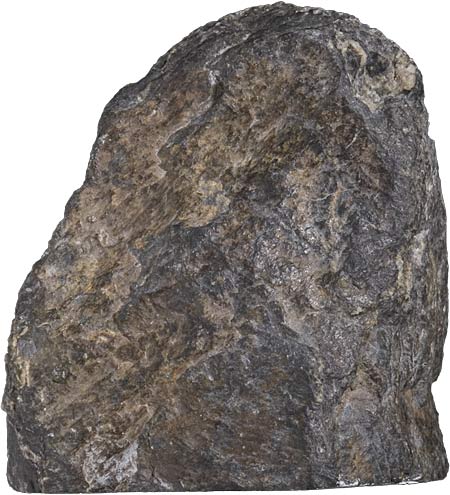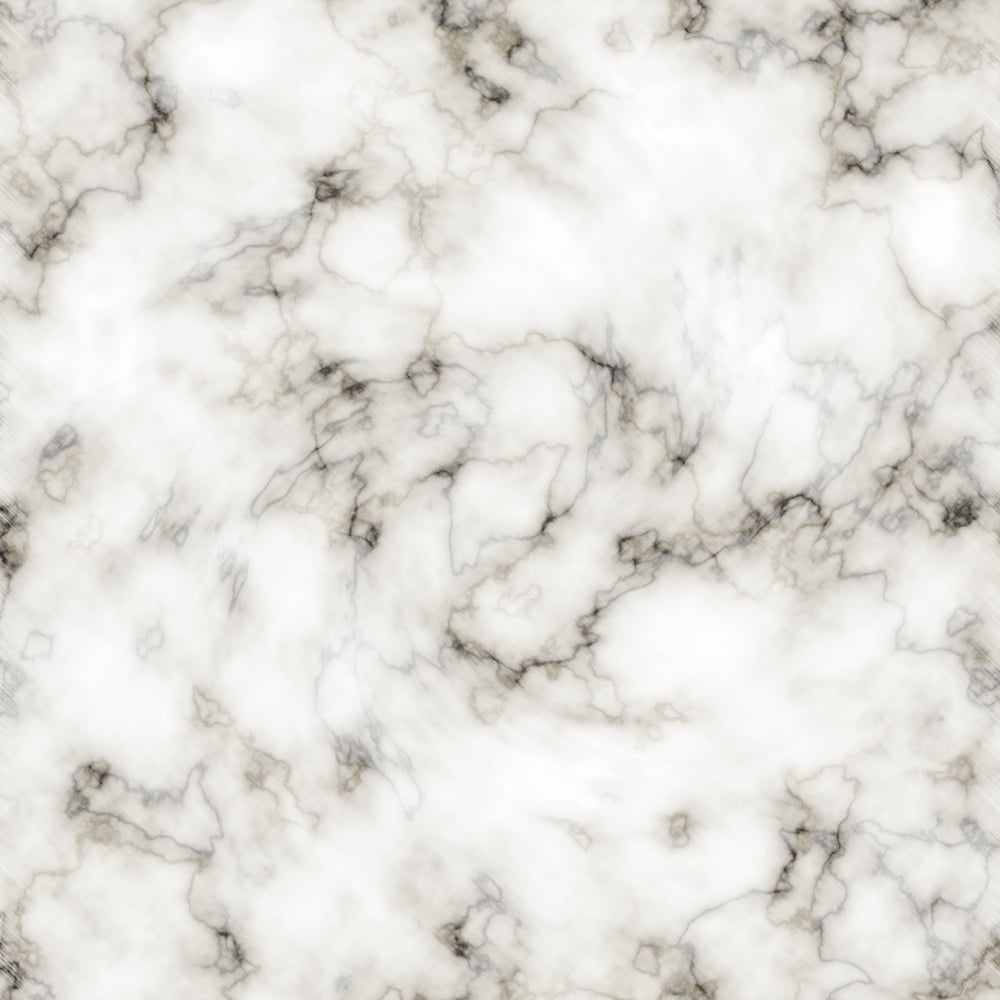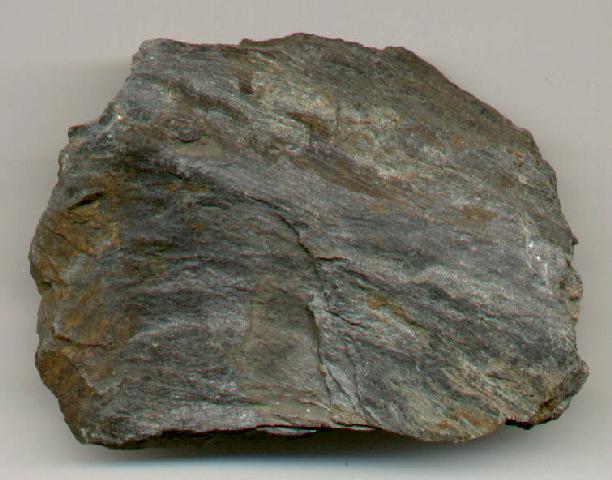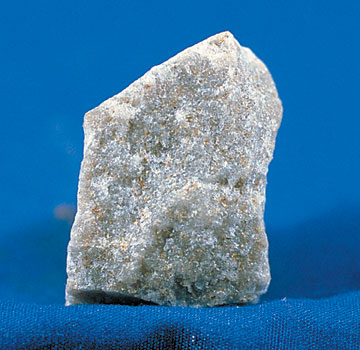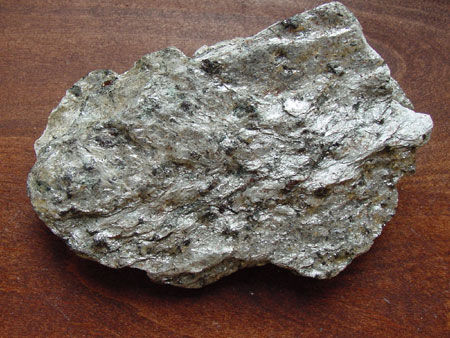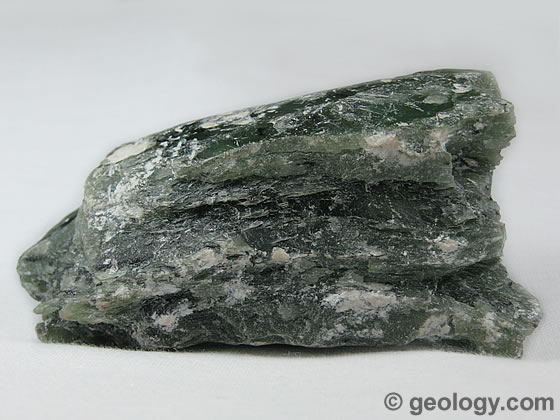Quiz On Metamorphic Rock Characteristics And Identification
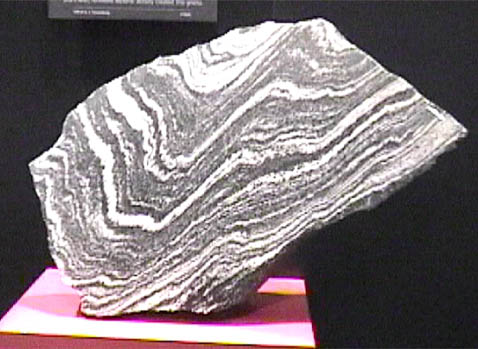
Assessment on metamorphic rock characteristics and identification.
- 1.
One plate tectonic process that causes very widespread metamorphism is ____________________.
Explanation
Subduction is the correct answer because it is a plate tectonic process where one tectonic plate is forced beneath another, usually resulting in the formation of a deep ocean trench. This process causes intense heat and pressure, leading to the metamorphism of rocks over a large area. The subducting plate carries sediments and minerals into the mantle, causing chemical changes and the formation of new minerals. This widespread metamorphism can result in the formation of regional metamorphic belts and the creation of new mountain ranges.Rate this question:
- 2.
The most important fluid promoting metamorphism is ____________________.
Explanation
Water is the most important fluid promoting metamorphism because it plays a crucial role in facilitating chemical reactions and transporting ions and molecules between minerals. It helps in the breakdown and recrystallization of minerals, allowing for the formation of new minerals and the alteration of existing ones. Water also acts as a medium for heat transfer, aiding in the increase of temperature and pressure necessary for metamorphic processes. Without water, metamorphism would be significantly hindered, making it the primary fluid responsible for promoting these geological changes.Rate this question:
- 3.
The three types of metamorphism are ____________________, ____________________, and ____________________.
Explanation
The three types of metamorphism are contact, dynamic, and regional. Contact metamorphism occurs when rocks come into contact with hot magma or lava, causing them to change due to the heat. Dynamic metamorphism occurs when rocks are subjected to intense pressure and shearing forces, usually along fault lines. Regional metamorphism occurs over a large area and is caused by high temperatures and pressures deep within the Earth's crust, often associated with mountain building.Rate this question:
- 4.
Metamorphic rocks are commonly divided into these two groups, based on their textures: ____________________ and ____________________.
Explanation
Metamorphic rocks are classified into two groups based on their textures. Foliated rocks have a layered or banded appearance due to the alignment of minerals during metamorphism. Nonfoliated rocks, on the other hand, lack any visible layering or banding and have a more uniform texture.Rate this question:
- 5.
The type of metamorphism that typically produces the hard, dense, fine-grained rocks called mylonites is called ____________________.
Explanation
Dynamic metamorphism is the type of metamorphism that typically produces the hard, dense, fine-grained rocks called mylonites. This type of metamorphism occurs due to intense pressure and shear stress along faults or shear zones, resulting in the deformation and recrystallization of rocks. The high pressure and shear forces cause the minerals in the rocks to align and form a fine-grained texture, giving rise to mylonites.Rate this question:
- 6.
The type of metamorphism that occurs over large areas, commonly at convergent plate margins, and is responsible for the production of most metamorphic rocks is ____________________.
Explanation
Regional metamorphism is the type of metamorphism that occurs over large areas, commonly at convergent plate margins. It involves the transformation of pre-existing rocks due to high pressures and temperatures over a long period of time. This process is responsible for the production of most metamorphic rocks, such as gneiss, schist, and marble. Regional metamorphism is typically associated with tectonic activity and the collision of continental plates, leading to the formation of mountain ranges.Rate this question:
- 7.
Metamorphism is most common along ____________________ plate boundaries.
Explanation
Metamorphism is most common along convergent plate boundaries because these boundaries involve the collision or subduction of tectonic plates. The intense pressure and heat generated during these processes cause rocks to undergo metamorphic changes. As the plates collide, the rocks are subjected to high pressure and temperature, leading to the transformation of their mineralogy, texture, and structure. This results in the formation of metamorphic rocks such as gneiss, schist, and marble. Therefore, convergent plate boundaries are the most favorable conditions for metamorphism to occur.Rate this question:
- 8.
As the plate subducts until it begins to melt, it generates magma, which rises and causes ____________________ metamorphism.
Explanation
As the plate subducts until it begins to melt, it generates magma, which rises and causes contact metamorphism. Contact metamorphism occurs when hot magma comes into contact with existing rocks, causing them to undergo changes in temperature and pressure, resulting in the formation of new minerals and textures.Rate this question:
- 9.
If metamorphic rock contains biotite, garnet, and staurolite, it is ____________________ grade.
Explanation
If a metamorphic rock contains biotite, garnet, and staurolite, it is classified as intermediate grade. The presence of these minerals suggests that the rock has undergone moderate to high levels of heat and pressure during metamorphism. Intermediate grade metamorphic rocks are typically formed at depths of several kilometers beneath the Earth's surface, where temperatures and pressures are higher compared to low-grade metamorphism. The minerals biotite, garnet, and staurolite are indicative of these higher-grade conditions, leading to the classification of the rock as intermediate grade.Rate this question:
- 10.
Many ore deposits, including tin and tungsten, are associated with ____________________metamorphism.
Explanation
Ore deposits, such as tin and tungsten, are commonly found in association with contact metamorphism. Contact metamorphism occurs when hot magma comes into contact with pre-existing rocks, causing the rocks to undergo changes in mineral composition and texture. This process can lead to the formation of valuable minerals and ores. Therefore, it is likely that tin and tungsten deposits are formed through contact metamorphism.Rate this question:
- 11.
Rocks that have been changed from previously existing rocks (but that were not completely melted) by the action of heat, pressure, and associated chemical activity are:_____ rocks
- A.
Intrusive
- B.
Igneous
- C.
Metamorphic
- D.
Sedimentary
Correct Answer
C. MetamorphicExplanation
Metamorphic rocks are formed when pre-existing rocks undergo changes due to heat, pressure, and chemical activity. These changes can occur deep within the Earth's crust, where the rocks are subjected to intense heat and pressure. As a result, the original rock's mineralogy, texture, and structure are altered, leading to the formation of metamorphic rocks. This process does not involve complete melting of the rocks, distinguishing it from the formation of igneous rocks. Therefore, the correct answer is metamorphic.Rate this question:
-
- 12.
Metamorphic rocks are those that:
- A.
Are claimed to have certain metaphysical properties, e.g., quartz crystals.
- B.
Have different mineral compositions due to increased temperature and pressure.
- C.
Have different chemical compositions due to organisms and sediments
- D.
Have the same chemical compositions of igneous rocks
Correct Answer
B. Have different mineral compositions due to increased temperature and pressure.Explanation
Metamorphic rocks are formed when pre-existing rocks undergo changes in their mineral composition due to increased temperature and pressure. This process, known as metamorphism, causes the minerals within the rocks to recrystallize and rearrange, resulting in a new mineral composition. This distinguishes metamorphic rocks from other types of rocks, such as igneous rocks, which have different chemical compositions. Therefore, the correct answer is that metamorphic rocks have different mineral compositions due to increased temperature and pressure.Rate this question:
-
- 13.
Metamorphic rocks may form from _______ rocks.
- A.
Igneous
- B.
Sedimentary
- C.
Metamorphic
- D.
All answers apply
Correct Answer
D. All answers applyExplanation
Metamorphic rocks can form from any type of rock - igneous, sedimentary, or even other metamorphic rocks. This is because metamorphism is a process that involves the transformation of existing rocks under high temperature and pressure conditions. Igneous rocks can undergo metamorphism when they are subjected to these conditions, as can sedimentary rocks and even pre-existing metamorphic rocks. Therefore, all of the given answers apply as possible sources for the formation of metamorphic rocks.Rate this question:
-
- 14.
Which three processes bring about metamorphism?
- A.
Heat, pressure, weathering
- B.
pressure, fluid activity, heat
- C.
Melting, pressure, fluid activity
- D.
Crystallization, differential pressure, melting
Correct Answer
B. pressure, fluid activity, heatExplanation
Metamorphism is a process that involves the transformation of rocks due to changes in temperature, pressure, and the presence of fluids. Heat is one of the processes that bring about metamorphism as it increases the temperature of rocks, causing them to recrystallize and change their mineral composition. Pressure is another process that contributes to metamorphism by exerting force on rocks, leading to their deformation and recrystallization. Fluid activity, such as the movement of water or other fluids, plays a crucial role in transporting and depositing minerals within rocks, promoting metamorphic changes. Therefore, the correct answer is pressure, fluid activity, and heat.Rate this question:
-
- 15.
The two most important sources of heat for metamorphism are
- A.
Intrusive magma bodies and deep burial
- B.
deep burial and volcanism
- C.
Radioactive decay and volcanism
- D.
Radioactive decay and deep burial
Correct Answer
A. Intrusive magma bodies and deep burialExplanation
The correct answer is intrusive magma bodies and deep burial. Intrusive magma bodies, such as magma chambers or plutons, release heat as they cool and solidify, causing surrounding rocks to undergo metamorphism. Deep burial refers to when rocks are buried at significant depths, which results in increased pressure and temperature, leading to metamorphism. Both of these processes contribute to the heat necessary for metamorphism to occur.Rate this question:
-
- 16.
Contact metamorphism is found along the boundaries between country rock and
- A.
Dikes
- B.
Batholiths
- C.
Sills
- D.
All answers apply
Correct Answer
D. All answers applyExplanation
Contact metamorphism occurs when hot magma intrudes into the surrounding country rock, causing the rock to undergo changes due to the heat and pressure. This process can occur along the boundaries between country rock and dikes, batholiths, and sills. In all three cases, the intrusion of magma causes the surrounding rock to be heated and altered, resulting in contact metamorphism. Therefore, all of the given answers apply to contact metamorphism.Rate this question:
-
- 17.
Which of the following lists of foliated rock types is arranged according to increasing coarseness of texture?
- A.
slate, phyllite, gneiss, schist
- B.
Slate, amphibolite, schist, phyllite
- C.
Schist, phyllite, gneiss, slate
- D.
Slate, phyllite, schist, gneiss
Correct Answer
D. Slate, phyllite, schist, gneissExplanation
The correct answer is slate, phyllite, schist, gneiss. This is because the texture of the rocks in the list becomes increasingly coarser as you move from slate to phyllite to schist to gneiss. Slate has a very fine-grained texture, while phyllite has slightly larger grains. Schist has an even coarser texture, and gneiss has the coarsest texture among the options given.Rate this question:
-
- 18.
The type of metamorphism that is common in fault zones, in which rocks are subjected to high differential pressures, is called
- A.
Contact
- B.
Regional
- C.
Dynamic
- D.
Differential
Correct Answer
C. DynamicExplanation
Dynamic metamorphism is a type of metamorphism that occurs in fault zones where rocks are subjected to high differential pressures. This type of metamorphism is characterized by the intense shearing and deformation of rocks along fault lines, leading to the formation of new minerals and textures. The high pressures and stresses result in the recrystallization and reorientation of mineral grains, causing the rocks to undergo significant changes in their structure and composition. Therefore, dynamic metamorphism is the correct answer for the given question.Rate this question:
-
- 19.
Metamorphic rocks are most common in the ocean basins.
- A.
True
- B.
False
Correct Answer
B. FalseExplanation
Metamorphic rocks are not most common in the ocean basins. Instead, they are most commonly found in regions where tectonic plates collide, such as mountain ranges or areas with active volcanic activity. These rocks are formed when existing rocks undergo intense heat and pressure, causing their minerals and textures to change. While some metamorphic rocks can be found in oceanic crust, they are not the most common type of rock found in ocean basins.Rate this question:
-
- 20.
Metamorphic rocks are the oldest known rocks.
- A.
True
- B.
False
Correct Answer
A. TrueExplanation
Metamorphic rocks are the oldest known rocks because they are formed from pre-existing rocks that undergo intense heat and pressure over long periods of time. This process, known as metamorphism, causes the minerals and textures of the rocks to change, resulting in the formation of metamorphic rocks. As a result, these rocks can provide valuable information about the Earth's history and the processes that have shaped it over millions of years.Rate this question:
-
- 21.
Metamorphic rocks are very common in the crystalline basement rocks of the oldest parts of continents.
- A.
True
- B.
False
Correct Answer
A. TrueExplanation
Metamorphic rocks are indeed very common in the crystalline basement rocks of the oldest parts of continents. This is because these rocks have undergone intense heat and pressure over millions of years, causing them to change in composition and texture. As a result, they are often found in regions where tectonic activity and mountain-building processes have occurred over long periods of time. These rocks are important because they provide valuable information about the geological history and processes that have shaped the Earth's crust.Rate this question:
-
- 22.
The concentric zones surrounding an igneous intrusion, and in which contact metamorphism has taken place, are called aureoles.
- A.
True
- B.
False
Correct Answer
A. TrueExplanation
The statement is true because aureoles are indeed the concentric zones that surround an igneous intrusion and are affected by contact metamorphism. Contact metamorphism occurs when the heat and fluids from the intrusion alter the surrounding rocks, causing changes in mineralogy and texture. These changes are most pronounced near the intrusion and gradually decrease with distance, forming the concentric zones known as aureoles.Rate this question:
-
- 23.
Metamorphic rocks indicate that an even older parent rock once existed in that place.
- A.
True
- B.
False
Correct Answer
A. TrueExplanation
Metamorphic rocks are formed when pre-existing rocks, known as parent rocks, undergo high temperatures and pressures deep within the Earth's crust. This process causes the minerals in the parent rock to recrystallize and form a new rock with different characteristics. Therefore, the presence of metamorphic rocks indicates that an older parent rock once existed in that place, which supports the statement that the answer is true.Rate this question:
-
- 24.
Metamorphic rocks can indicate the physical conditions that once existed in a geological setting.
- A.
True
- B.
False
Correct Answer
A. TrueExplanation
Metamorphic rocks can indicate the physical conditions that once existed in a geological setting because they are formed by the transformation of existing rocks under high temperature and pressure. The minerals in these rocks can provide clues about the temperature, pressure, and deformation that occurred during their formation. By studying the textures and mineral compositions of metamorphic rocks, geologists can gain insight into the past geological processes and conditions that shaped the Earth's crust. Therefore, the statement is true.Rate this question:
-
- 25.
Metamorphic rocks can indicate the chemical changes that have occurred at various depths.
- A.
True
- B.
False
Correct Answer
A. TrueExplanation
Metamorphic rocks are formed through the process of metamorphism, which involves the transformation of pre-existing rocks due to changes in temperature, pressure, and chemical composition. These changes occur at various depths within the Earth's crust. Therefore, it is true that metamorphic rocks can indicate the chemical changes that have occurred at different depths, as they provide evidence of the geological processes and conditions that have taken place over time.Rate this question:
-
- 26.
Contact metamorphism along sills and dikes may produce metamorphosed zones many kilometers wide.
- A.
True
- B.
False
Correct Answer
B. FalseExplanation
Contact metamorphism along sills and dikes may produce metamorphosed zones many kilometers wide. This statement is false. Contact metamorphism occurs when rocks are in direct contact with a heat source, such as magma. The metamorphic effects are typically localized and limited to a narrow zone around the heat source. The width of the metamorphosed zone is usually measured in meters to tens of meters, not many kilometers.Rate this question:
-
- 27.
Contact metamorphism can take place beside a lava flow.
- A.
True
- B.
False
Correct Answer
A. TrueExplanation
Contact metamorphism can take place beside a lava flow because when a lava flow comes into contact with surrounding rocks, the high temperature of the lava can cause the rocks to undergo metamorphism. This process, known as contact metamorphism, occurs due to the heat transfer from the lava to the surrounding rocks, causing changes in their mineralogy and texture. Therefore, it is possible for contact metamorphism to occur beside a lava flow.Rate this question:
-
- 28.
The temperature of the intrusive magma has little effect on the metamorphic minerals formed.
- A.
True
- B.
False
Correct Answer
B. FalseExplanation
The temperature of the intrusive magma does have an effect on the metamorphic minerals formed. The temperature at which the magma intrudes into the surrounding rocks will determine the degree of metamorphism that occurs. Higher temperatures will result in more intense metamorphism and the formation of different minerals, while lower temperatures will result in less intense metamorphism and the formation of different minerals. Therefore, the statement that the temperature of the intrusive magma has little effect on the metamorphic minerals formed is false.Rate this question:
-
- 29.
The index minerals that form in a metamorphic rock depend on the composition of the parent rock affected.
- A.
True
- B.
False
Correct Answer
A. TrueExplanation
The statement is true because the formation of index minerals in a metamorphic rock is influenced by the composition of the parent rock. Different minerals have different chemical compositions and are stable under specific temperature and pressure conditions. Therefore, the composition of the parent rock determines the minerals that can form during the metamorphic process.Rate this question:
-
- 30.
Differential pressure results from unequal pressure on different sides of a rock
- A.
True
- B.
False
Correct Answer
A. TrueExplanation
Differential pressure refers to the difference in pressure between two points. In the context of the given statement, it means that there is an unequal pressure on different sides of a rock, which is true. This unequal pressure can occur due to various factors such as tectonic forces, erosion, or the presence of fluids within the rock. As a result, the rock may experience stress and deformation, leading to geological phenomena like folding or faulting.Rate this question:
-
- 31.
A rock that has undergone medium to high grade metamorphic conditions and was originally quartz sandstone is slate.
- A.
True
- B.
False
Correct Answer
B. FalseExplanation
Slate is a rock that has undergone low to medium grade metamorphic conditions and was originally shale or mudstone, not quartz sandstone.Rate this question:
-
- 32.
The mineral calcite makes up the rock limestone; metamorphosed limestone is marble.
- A.
True
- B.
False
Correct Answer
A. TrueExplanation
Calcite is indeed a mineral that is commonly found in limestone. Limestone is a sedimentary rock primarily composed of calcite. When limestone undergoes metamorphism, it transforms into marble. Marble is a metamorphic rock that is formed from the recrystallization of limestone under high pressure and temperature conditions. Therefore, the statement that "The mineral calcite makes up the rock limestone; metamorphosed limestone is marble" is true.Rate this question:
-
- 33.
The classification scheme your textbook presents for metamorphic rocks depends first on color and then on composition.
- A.
True
- B.
False
Correct Answer
B. FalseExplanation
The given statement is false. The classification scheme for metamorphic rocks does not depend first on color and then on composition. Instead, it depends primarily on the mineral composition and texture of the rock. Color may be a secondary factor in some cases, but it is not the primary basis for classification.Rate this question:
-
- 34.
Economically valuable minerals often found in metamorphic rocks include talc.
- A.
True
- B.
False
Correct Answer
A. TrueExplanation
Economically valuable minerals are frequently found in metamorphic rocks, and talc is one of them. Talc is a soft mineral used in various industries, such as cosmetics, ceramics, and paper manufacturing. It is commonly found in metamorphic rocks formed from the transformation of magnesium-rich rocks, such as serpentinite. Due to its numerous applications and commercial value, talc is considered economically valuable and is indeed often found in metamorphic rocks.Rate this question:
-
- 35.
Marble's parent rock is quartz.
- A.
True
- B.
False
Correct Answer
B. FalseExplanation
The statement is false because marble is not formed from quartz. Marble is a metamorphic rock that is formed from limestone, while quartz is a mineral that is commonly found in igneous and sedimentary rocks. Therefore, marble's parent rock is not quartz.Rate this question:
-
- 36.
This metamorphic rock is foliated, crystallin and course grained from a regional metamorphic area. The name of this rock is_____________.
Correct Answer
gneissExplanation
The given rock is described as foliated, crystalline, and coarse-grained, which are characteristics of gneiss. Gneiss is a type of metamorphic rock that forms under high temperature and pressure conditions. It is composed of minerals such as quartz, feldspar, and mica, which give it its distinct foliated texture. Gneiss is commonly found in regional metamorphic areas where intense tectonic forces have acted on the rocks, causing them to recrystallize and form gneiss. Therefore, gneiss is the correct answer based on the given description.Rate this question:
- 37.
This rock's mineral composition is aluminous. It is nonfoliated with medium to fine grains due to contact metamorphism. The name of this rock is____________.
Correct Answer
hornfelsExplanation
This rock is classified as hornfels based on its mineral composition, which is aluminous. Hornfels is a nonfoliated rock that forms from the intense heat and pressure of contact metamorphism. It typically has a medium to fine grain size.Rate this question:
- 38.
This rock was formed by contact metamorphism, nonfoliated and is high grade. It often used in homes as flooring. The name of this rock is____________.
Correct Answer
marbleExplanation
Marble is a nonfoliated rock that is formed by contact metamorphism, which means it is created when limestone is subjected to high temperatures and pressures. It is a high-grade rock, known for its beautiful appearance and durability, making it a popular choice for flooring in homes. Therefore, the correct answer for the given question is marble.Rate this question:
- 39.
This rock is foliated has no particular grain orientation and is platy or pancake shaped. It is produced through regional metamorphism. The name of this rock is____________.
Correct Answer
phylliteExplanation
Phyllite is a type of metamorphic rock that is characterized by its foliated texture, lack of grain orientation, and platy or pancake-like shape. It is formed through regional metamorphism, which occurs over large areas due to high pressure and temperature. The given description matches the characteristics of phyllite, making it the correct answer.Rate this question:
- 40.
This rock is nonfoliated, crystallin and fine to medium grained. The minerals present in it are quartzofeldspathic. It was produced by contact metamorphism. The name of this rock is____________.
Correct Answer
quartziteExplanation
The given rock is described as nonfoliated, crystalline, and fine to medium-grained. It is composed of quartzofeldspathic minerals and is produced by contact metamorphism. Based on these characteristics, the name of this rock is quartzite.Rate this question:
- 41.
This rock has aluminous minerals, is foliated and produce via regional metamorphism. The name of this rock is____________.
Correct Answer
schistExplanation
The given characteristics of the rock, such as the presence of aluminous minerals, foliation, and formation through regional metamorphism, are all consistent with the properties of schist. Therefore, the correct answer is schist.Rate this question:
- 42.
This rock is mafic and has a course texture and produced through regional metamorphism. It's green color is significant to its mafic nature. The name of this rock is____________.
Correct Answer
serpentiniteExplanation
The given rock is described as mafic, which means it has a high content of magnesium and iron minerals. It also has a coarse texture, indicating that the rock's grains are relatively large. The rock is produced through regional metamorphism, which suggests that it has undergone significant pressure and temperature changes. The green color of the rock is significant because mafic rocks often have dark green to black colors due to the presence of minerals like olivine and pyroxene. Based on these characteristics, the name of this rock is serpentinite.Rate this question:
- 43.
This rock has calcereous minerals, is nonfoliated, crystalline and can have fine or large grains of rubies or emeralds. It is produced throught contact metamorphism. The name of this rock is____________.
Correct Answer
skarnExplanation
Skarn is a type of metamorphic rock that is formed through contact metamorphism. It contains calcereous minerals and is nonfoliated, meaning it lacks distinct layers or foliation. Skarn can have fine or large grains of rubies or emeralds, which are valuable gemstones. Therefore, based on the given characteristics, skarn is the most suitable name for this rock.Rate this question:
- 44.
This rock is aluminous, foliated and platy or pancake in shape. It is produced through regional metamorphism and has a low grade. This rock is also used in home as flooring. The name of this rock is____________.
Correct Answer
slateExplanation
The given description of the rock being aluminous, foliated, and platy in shape, produced through regional metamorphism, and having a low grade matches the characteristics of slate. Slate is a type of metamorphic rock that is commonly used as flooring in homes.Rate this question:
- 45.
This rock is calcareous, non foliated and fine grained. It is produced through dynamic metamorphism and has a slippery feel to it. The name of this rock is____________.
Correct Answer
soapstoneExplanation
Soapstone is a type of rock that is calcareous, non-foliated, and fine-grained. It is formed through dynamic metamorphism, which occurs under high pressure and temperature conditions. Soapstone is known for its slippery feel, which is due to its high talc content. Therefore, based on the given characteristics, the correct answer is soapstone.Rate this question:
Quiz Review Timeline +
Our quizzes are rigorously reviewed, monitored and continuously updated by our expert board to maintain accuracy, relevance, and timeliness.
-
Current Version
-
Mar 21, 2023Quiz Edited by
ProProfs Editorial Team -
Jun 28, 2011Quiz Created by
Jbucher122
 Back to top
Back to top



